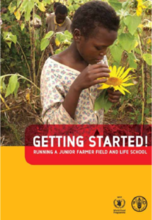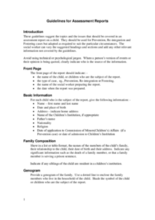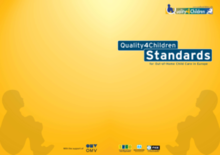Demographic Data
|
Sources: World Bank, UNICEF, UNDP HDR 2015, DHS 2011 |
Displaying 13511 - 13520 of 14348
This study by Shihning Chou, Kevin Browne and Melanie Kirkaldy investigated whether intercountry adoption agencies on the internet upheld the principles of the UN Convention of the Rights of the Child (UNCRC 1989) and the Hague Convention (1993).
Overview of the role of communities in identifying and protecting vulnerable children, as well as guidance for organizations on how to mobilize and support community groups.
A guide to setting up, operating and sustaining an agricultural and life skills participatory training program for orphans and vulnerable children (ages 12-18), living in situations of food insecurity.
A report that identifies gaps and provides recommendations for protecting and supporting girls living on the streets. It provides models of good practices from Ghana, Kenya and Zimbabwe.
Guidelines for recording a comprehensive assessment of the child. Outlines questions to be asked during the assessment.
Briefing paper on the global characteristics of kinship care, the required policy and legislative framework, and the role of practitioners in assessing, supporting, and monitoring kinship care
A short paper on the importance of child care provision as a critical service in helping local communities recover post disaster. It gives 4 policy recommendations for protecting and restoring child care infrastructure.
Guidance on how to care for the children under five who are separated from their families in emergencies. Includes chapters on tracing, registering, verification, reunification, and the provision of care to meet developmental needs.
A set of standards on the process of a child or young person entering care, being cared for, and leaving care, based primarily on the views of children, families, and caregivers.
A report on common challenges facing children without parental care in the Caribbean (CARICOM region). It gives an in-depth understanding of why there is a lack of family-based preventative and rehabilitative services for children and provides recommendations.









